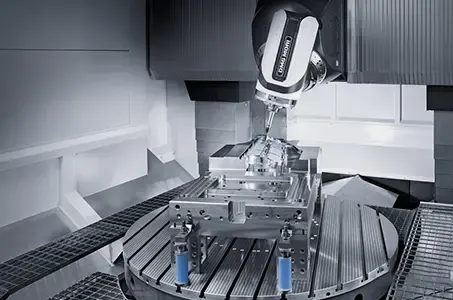
Celebrating the 76th anniversary of the founding of the People’s Republic of China and the Mid Autumn Festival!
Wishing all Chinese around the world a happy holiday!
Wishing all Chinese around the world a happy holiday!
01 Advantages of Ceramic BladesHard alloy cutting tools encounter...
Dry machining is one of the important development trends...
~Abandoning the complexity of multiple cutting tools, only one...

New Technologies for Cutting Tools in the Mold Processing Industry (Latest Developments in 2025)
High precision composite machining technology
Five axis linkage micro milling: GF Archie Shamir’s μ milling cutter (diameter 0.01mm) from Switzerland achieves micro level mold detail machining with an accuracy of ± 1 μ m.
Ultrasonic vibration assisted cutting: DMG MORI’s ultrasonic tool holder (frequency 20kHz) reduces cutting force by 50%, making it suitable for processing hard and brittle materials such as ceramic molds.
Superhard materials and composite structure technology
Nanograin PCBN cutting tools: such as Sumitomo Electric’s BN-S20 series, optimized with nanoscale CBN grains (particle size 0.5 μ m) and cobalt based binders, can increase the service life by 50% when processing hardened steel (HRC60), and the cutting speed can reach 300m/min.
Gradient function PCD tool: Sandvik’s gradient PCD blade has a surface diamond content of 95% and a bottom layer containing a tungsten carbide transition layer, which improves impact resistance by 30% and is suitable for processing high silicon aluminum alloy mold cavities.
Intelligent cutting tools and sensing technology
Embedded sensor tool: Kennametal’s KSEM system integrates temperature and vibration sensors inside the tool holder to monitor cutting status in real-time. Through AI algorithms, parameters are dynamically adjusted to reduce chatter by up to 70%.
Self sensing coating technology: Fluorescent materials are embedded in DLC coatings to provide real-time feedback on wear status through spectral analysis, with an accuracy of ± 0.1 μ m.
Additive Manufacturing and Topology Optimization of Cutting Tools
3D printed hard alloy cutting tools: Sandvik Coromant’s 3D printed milling cutters adopt a lattice structure, reducing weight by 40% and increasing rigidity by 15%, making them suitable for deep cavity mold processing.
Biomimetic topology optimization: The biomimetic honeycomb structure tool body (such as OSG’s “honeycomb milling cutter”) reduces weight by 20% to improve acceleration and increase processing efficiency by 25%.
Advanced coatings and surface treatment
Super lubricating coating: The “DLC+MoS ₂” composite coating from Daido, Japan has a friction coefficient as low as 0.05, reducing cutting force by 40% when processing titanium alloys.
Laser micro texturing technology: Laser processing of micrometer sized pits (diameter 50 μ m) on the tool surface reduces chip adhesion and extends lifespan by 2 times.
Green cutting and cooling technology
Low temperature cold air cutting: -30 ℃ cold air replaces traditional coolant, reduces tool thermal stress, and ensures surface roughness Ra ≤ 0.4 μ m when machining aluminum alloys.
Electrostatic atomization cooling: High voltage static electricity atomizes the coolant into 5 μ m particles, directly reaching the cutting area and reducing the temperature by more than 200 ℃.
Digital twins and AI optimization
Virtual tool library: Siemens NX has a built-in digital twin model that can simulate tool wear under 100000 working conditions, optimizing parameters and increasing efficiency by 60%.
AI process recommendation: The “CAPTOR AI” system of Shangao Cutting Tools analyzes machining data through deep learning and automatically matches the best tool and parameter combination.
Wishing all Chinese around the world a happy holiday!
01 Advantages of Ceramic BladesHard alloy cutting tools encounter...
Dry machining is one of the important development trends...
~Abandoning the complexity of multiple cutting tools, only one...

FUJI Tools was founded in 1992 with a business policy dedicated to CNC machining center peripheral tools and cutting tools. In recent years, the company has invested more resources to establish a comprehensive operating environment and advanced manufacturing equipment in response to the cutting market demand, providing higher product quality and improved processing efficiency for mechanical processing industry workers.
Xingtan , Shunde ,Foshan City,Guangdong,China 528303
fujicn@jsh-fujitools.com
86-138 2276 9081